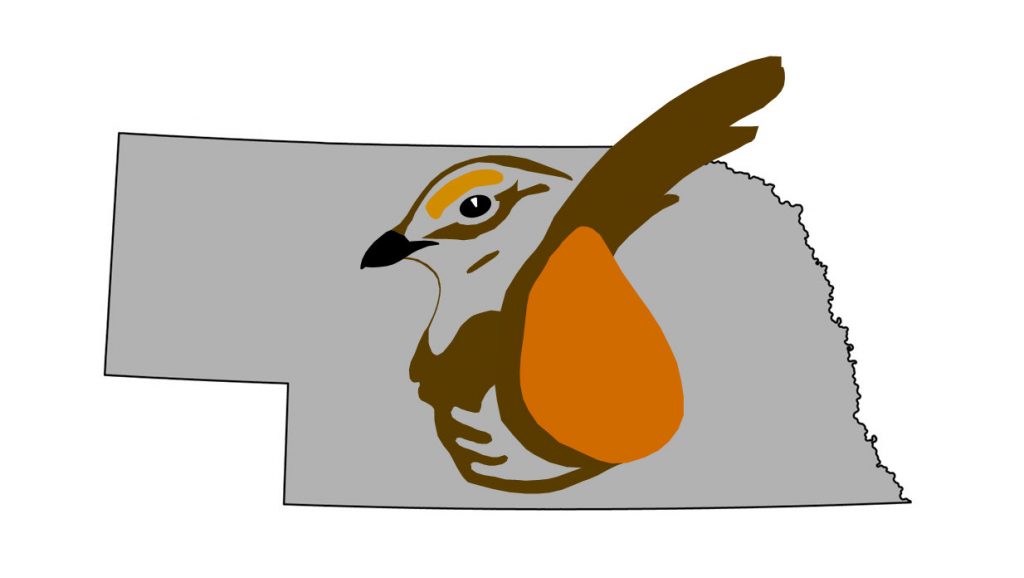Psaltriparus minimus
Status: No accepted records.
Taxonomy: Ten subspecies are recognized (AviList 2025, Sloane 2020), six north of Mexico, comprised of three along the Pacific Coast, and three in the Interior: californicus of interior Oregon to southern California, dimorphicus of mountains of extreme southwestern New Mexico and west and central Texas into north-central Mexico, and plumbeus, of eastern Oregon and eastern California to Idaho, Wyoming, Arizona, New Mexico, Oklahoma, and western Texas.
Use of “American Bushtit” rather than “Bushtit” avoids confusion with Asian species of bushtit (Gill et al 2022).
Comments: One reported without details but said to have matched this species in a field guide, was in Scottsbluff, Scotts Bluff Co 27 Jan 2001; it could not be checked before it departed (Alice Kenitz, personal communication).
The Editor of Nebraska Bird Review, in a discussion of species reported without documentation, stated that he “was aware of unpublished possible or probable records in Nebraska of … Wrentit…” (Cortelyou 1973). The Editor, R.G. Cortelyou, noted later (personal communication) that the observer of the “Wrentit” had made an error in his/her report and had intended to report Bushtit. No further information as to this possible report of Bushtit is known (Bray et al 1986).
It is not unlikely that this species could occur in Nebraska. It is a “very rare fall and winter visitor” on the eastern plains of Colorado, mostly southward, with eight records Nov-Feb, including two as far north as Weld Co, about 55 miles from Nebraska; there are numerous records along the Colorado Front Range (Andrews and Righter 1992; eBird.org accessed Nov 2023). In Wyoming there is an extra-limital record in Cheyenne, Laramie Co 14 May 1975 (Faulkner 2010). It is a “Rare and irregular winter visitant” to southwest Kansas (Thompson et al 2011); it has been recorded 5 Nov-12 Jan in eight counties, mostly in Morton Co but north to Ellis Co, where four were netted 16 Nov 1968.
Bushtits should be looked for Nov-Feb in towns and juniper areas in the southern Panhandle and southwest Nebraska.
Literature Cited
Andrews, R., and R. Righter. 1992. Colorado birds. Denver Museum of Natural History, Denver, Colorado, USA.
AviList Core Team, 2025. AviList: The Global Avian Checklist, v2025. https://doi.org/10.2173/avilist.v2025.
Bray, T.E., B.K. Padelford, and W.R. Silcock. 1986. The birds of Nebraska: A critically evaluated list. Published by the authors, Bellevue, Nebraska, USA.
Cortelyou, R.G. 1973. More on the “White-tailed Tropicbird” (NBR 41:59). NBR 41: 79-80.
Faulkner, D.W. 2010. Birds of Wyoming. Roberts and Company, Greenwood Village, Colorado, USA.
Gill, F., D. Donsker, and P. Rasmussen (Eds). 2022. IOC World Bird List (v 12.2). Doi 10.14344/IOC.ML.12.2. http://www.worldbirdnames.org/.
Sloane, S.A. 2020. Bushtit (Psaltriparus minimus), version 1.0. In Birds of the World (A.F. Poole and F.B. Gill, Editors). Cornell Lab of Ornithology, Ithaca, NY, USA. https://doi.org/10.2173/bow.bushti.01.
Thompson, M.C., C.A. Ely, B. Gress, C. Otte, S.T. Patti, D. Seibel, and E.A. Young. 2011. Birds of Kansas. University Press of Kansas, Lawrence, Kansas, USA.
Recommended Citation
Silcock, W.R., and J.G. Jorgensen. 2025. American Bushtit (Psaltriparus minimus). In Birds of Nebraska — Online. www.BirdsofNebraska.org
Birds of Nebraska – Online
Updated 19 Jul 2025
